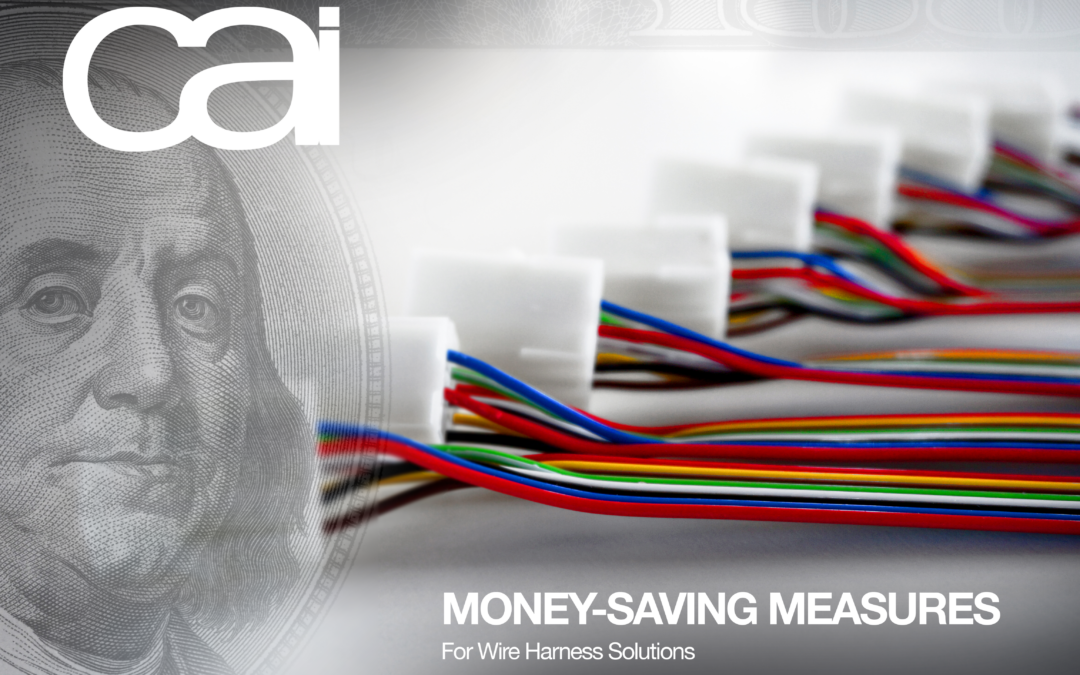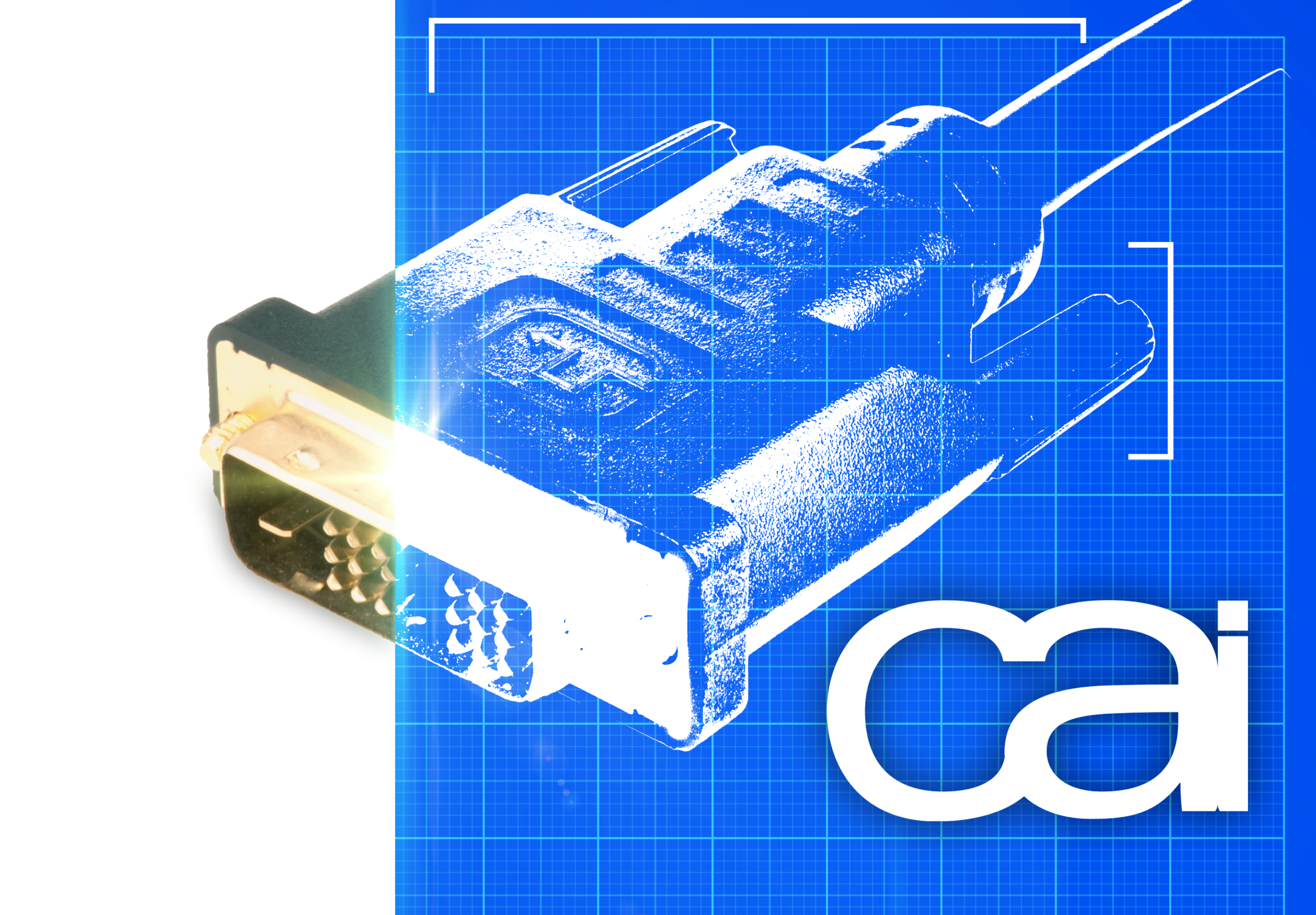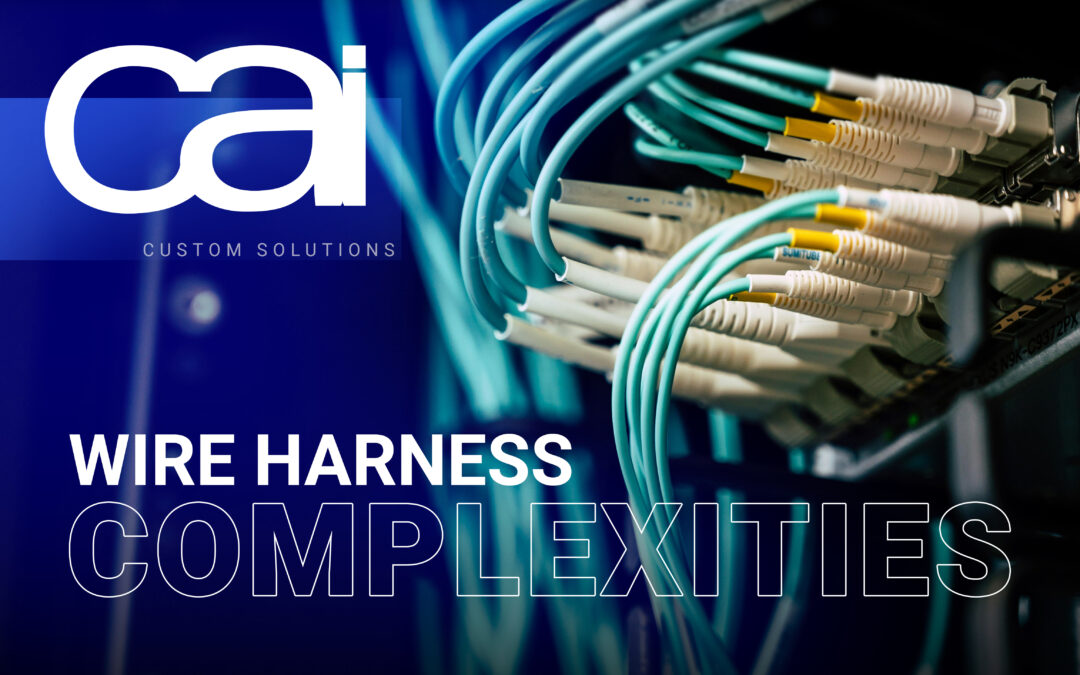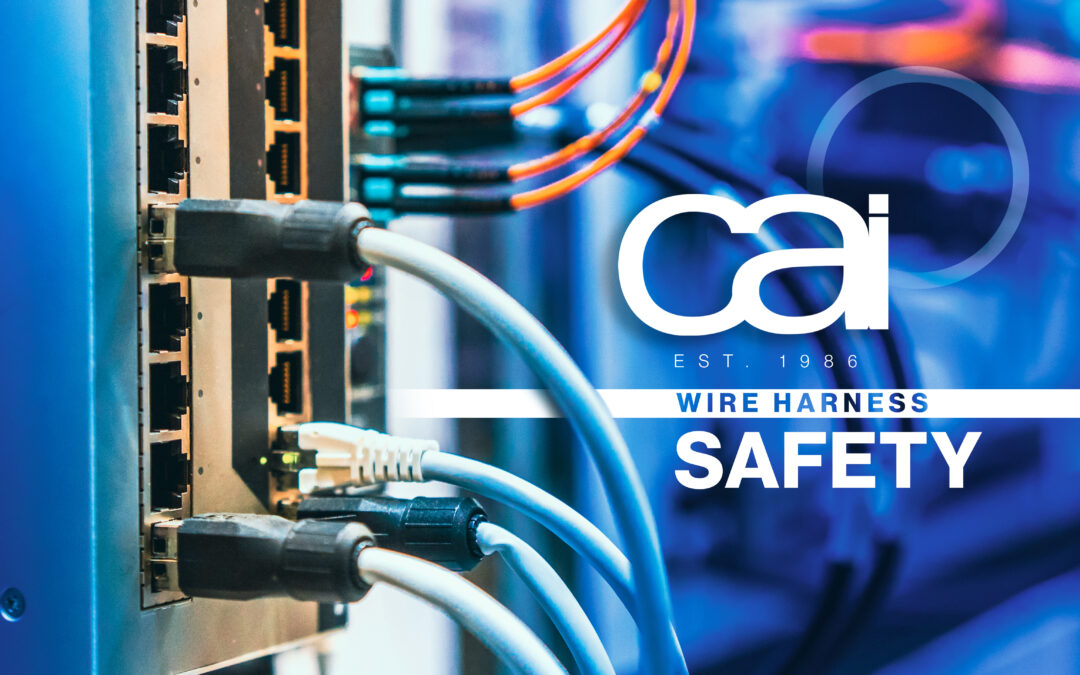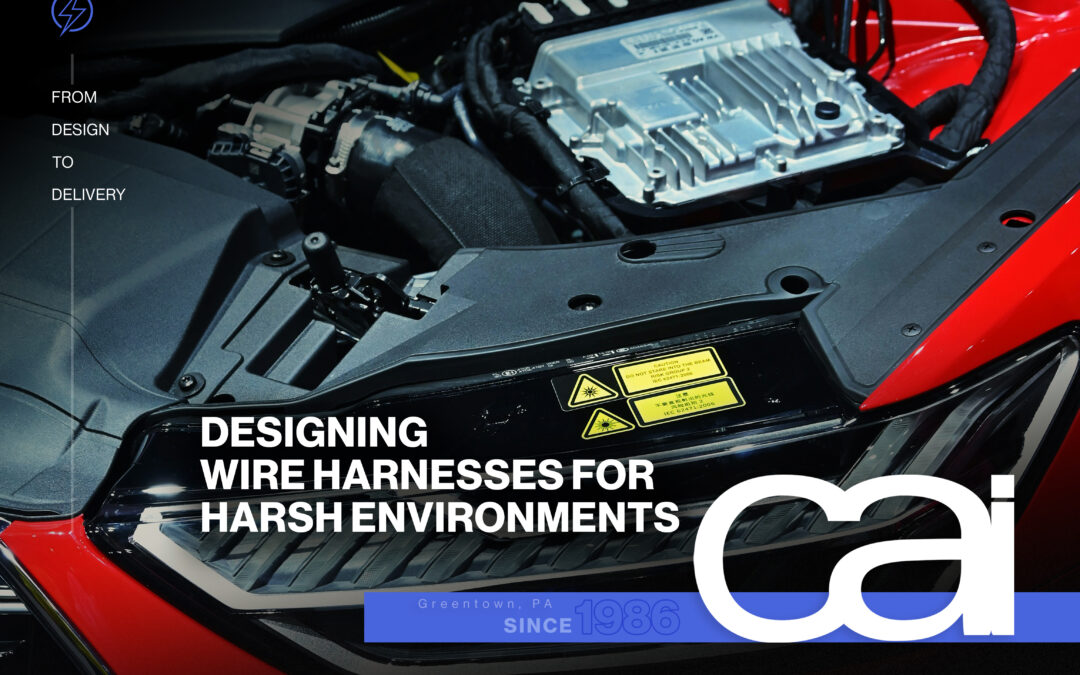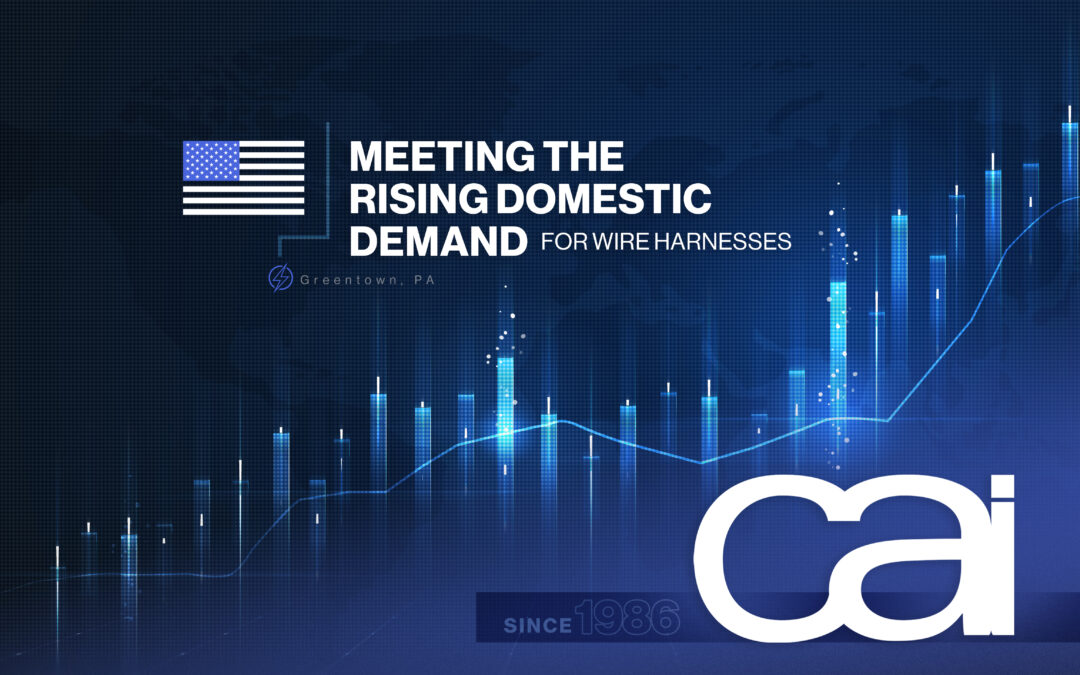Keep These Key Things in Mind During the Cable Assembly Design Process
An essential part of any electrical system, utilized in a multitude of industries for transmitting power and data, a cable assembly is a collection of cables or wires organized and wrapped together in a single protective sheath to offer enhanced protection, performance, and organization.
From conductors and connectors to insulation and jacket, choosing the best components for a cable assembly is vital to ensuring that it works optimally for its intended application and environment. Likewise, making the wrong choices during the design process can lead to big headaches down the road including safety issues and system failure.
For over 35 years, CAI has been a leading custom cable assembly and wire harness manufacturer for a wide range of industries across the globe. From prototype to delivery, you’ll save time, money, and hassle by choosing CAI and their turnkey services to meet your electrical system needs.
When designing a cable assembly, technicians must carefully consider a number of important factors, especially these top six:
1. Conductor Specs
As the metallic highway for power and data travel, the conductors are arguably the most significant part of a cable assembly. Which conductor material, size (gauge), and wire type (stranded or solid) you should choose depends in large part on the electrical needs (voltage and current) of the system for which the cable assembly will be used.
For instance, material and cross-section size contribute to a wire’s resistance, or “the property of an electrical component to resist the flow of electric current.” High resistance is an undesirable trait and can cause electrical energy to turn into heat, causing energy loss and unsafe conditions.
The more power drawn from the conductor, the higher the gauge needed. If an assembly involves a large run of cable, the impedance of the cable could become a factor. This is most common with a data line where loss can occur over a long distance. This could also lead to poor signal quality, network latency, and increased noise in the signal.
In most cases, standard copper is the conductive material of choice, although alloys such as copper-steel, copper-chromium, and copper-cadmium are sometimes used to increase breaking strength. Rarer conductor material options, including platinum and stainless steel, are used when copper isn’t preferred, such as with implantable devices in the medical industry.
Copper not only is cost effective but also works with many different types of coatings such as tin, silver, and nickel which can be used across multiple cable assemblies to limit corrosion, facilitate current termination, and deliver enhanced high-frequency performance.
Another choice to be made regarding conductor specifications is between solid core wire and stranded core wire. Solid wires consist of a solid core, whereas stranded wire consists of several thinner wires twisted into a bundle.
Less expensive than stranded core wire, solid core is less flexible yet able to handle high-speed applications and higher power ratings due to having lower power loss over long runs. Typically used for shorter cable runs and when the cable is moved around or connected/disconnected frequently, stranded wire offers enhanced flexibility at the cost of a lower power rating.
2. Insulation Material
Once you know which conductors you’ll be using, you can determine the insulation material to wrap around each conductor. This helps guard against external conditions, mechanical stress, shorts, and dielectric breakdown from surrounding signals.
While there are two primary types of insulation — thermoset and thermoplastic — there are many subtypes to choose from within those categories based on the cable’s future environment, desired dielectric constant (which affects the impedance and energy loss through a cable), flexibility, temperature range, flammability, and outgassing
Widely used for commercial cables, PVC is one of the most common insulation materials, due to its affordability and versatility, though it’s not a great option for high-speed, high-temperature, or high-outgassing applications. The polyolefin family (polyethylene and polypropylene) features low dielectric constant, making it a good solution for high-speed applications. However, a low temperature range and poor outgassing limit its use in certain applications. With a low dielectric constant, high temperature rating, and low outgassing, Teflon (FEP, PFA, and PTFE) insulation offers the best electrical and mechanical applications; however, it will cost you, as it can be up to ten times more expensive than PVC.
For increased resistance to chemical interference, “foaming” the insulation is also a popular option.
3. Cable Shielding
With power cables and data lines, electromagnetic interference (EMI) is a huge threat to the overall performance of an assembly and, consequently, the device that is counting on it. This is why cable shielding is such a vital element to creating an effective cable assembly.
Conductive material wrapped around the wires inside a cable, a proper shield reduces the effects of EMI during operations. Without quality shielding, a power transmission line, for instance, can cause unwanted noise in a data line that’s placed too close to it.
Within cables, there are two types of shield: an individual shield wrapped around a single twisted pair to prevent crosstalk inside, and an overall shield encompassing the entire cable bundle to prevent EMI from passing in or out.
There are a few different options for common shielding — including braided, foil, and spiral — each with its own advantages and disadvantages. For instance, while braided shielding is typically more expensive than aluminum foil shielding, it provides better durability and noise suppression due to copper having a higher conductivity than aluminum. Check out this previous blog for advice on how to pick the right cable shielding for your cable assembly,
4. Jacket Options
The last and most essential barrier between the cable assembly’s inner parts and the outside environment is its outer jacket, or sheathing, which is a non-conductive material that surrounds and protects all the cables and wires within while also helping improve organization and appearance.
Because cable assemblies often have to withstand everything from water and extreme temperatures to constant flexing and vibration, these jackets must be extremely tough, flexible, and resistant to multiple threats. Jacket material options are similar to wire insulation material options, but the external environment plays an even greater factor in deciding which jacket to choose, being that there’s nothing in between the two.
Offering a low-cost, tough, flexible solution that’s flame- and oil-resistant, PVC is the most commonly used jacket material. For higher insulation resistance, Polyethylene (PE) is a popular choice that allows for higher temperature rating and better electrical properties than PVC, though it’s not as flexible. Polyurethane (PUR) jackets provide good oil and ozone resistance and maintain shape better than most other options. Smooth, soft, and flexible, silicone is preferred in applications where the appearance of the cable is important. Teflon works well with a wide variety of temperatures and has very low outgassing, making it ideal for aerospace and downhole applications.
Jackets must meet specific requirements and industry standards including IP67 and IP68 ratings which concern its ability to remain dustproof and waterproof. This is where overmolding must maintain a leakproof bond to the jacket.
5. Connectors
With a wide variety of connector options to choose from, the type and speed of the signal being used plays a big part in the decision-making process. Crimp-type connectors are commonly chosen for power applications while soldered or welded type connectors are preferred for high-speed transmissions. Crimp connectors are typically more flexible and can be swapped out more easily than soldered or welded connectors, depending on the device being used.
The devices the assembly will be working with may be a limiting factor as to connector options. For instance, the equipment may already require a certain mating type.
6. Certifications
Because different governing agencies operate in different regions and countries, the location in which a cable assembly will be used plays an important role in determining which safety and environmental standards it must meet in its construction.
In the U.S., CSA and UL are the primary regulatory and safety bodies that set the guidelines for installations. Most other countries use the International Electrotechnical Commission (IEC), International Commission for Rules for the Approval of Electrical Equipment (CEE), or European Committee for Electrical Standardization (CENELEC) as the basis for their guidelines.
Meanwhile, there are environmental standards, such as the REACH and RoHS directives, that limit or restrict the use of hazardous substances in the European Union. U.S. states and regions have adopted similar standards such as California’s Electronic Waste Recycling Act (EWRA).
Assemblies may also have to meet industry standards based on specific performance criteria such as HDMI, SFP+, and QSFP, or be verified by an independent testing service such as ETL.
Overall, making the correct design choices will produce the best results for your custom cable assembly. With the proper conductor gauge and core, shielding, and jacket material you can ensure that your design will continue to function for years to come. An experienced manufacturing company like CAI can help you every step of the way in the design process. For expert guidance and trusted craftsmanship to bring your high-quality cable assembly vision to life, start a conversation with CAI today.
